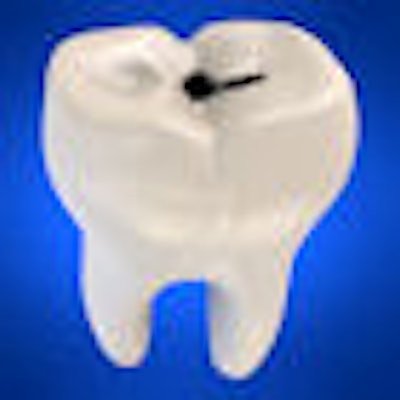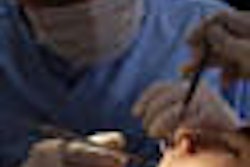
SAN DIEGO - Sealing occlusal caries rather than performing a restorative treatment can arrest the caries lesions, according to a presentation on Thursday at the International Association for Dental Research (IADR) general session and exhibition.
Researchers from the University of Copenhagen wanted to investigate the possibility of nonoperative sealing of manifest occlusal caries lesions that otherwise would have been treated with conventional restoration.
They conducted a prospective, randomized study in the young permanent dentition, treating 523 occlusal caries lesions in 523 patients ages 6 to 17 years. All lesions were assessed to be in need of operative treatment and were limited to the outer half of the dentin. Informed consent was obtained from the patients/parents.
After randomization in a ratio of 2-to-1, 370 resin sealants and 153 resin restorations were carried out by 72 public dentists from August 2006 to November 2009. The treatments were followed by annual clinical and radiographic control examinations. Chi-square tests were applied for statistical comparisons between sealants and restorations.
After an average observation period of 2.5 years, the dropout rate was 3%. Of the sealants, 76% were well-functioning, 10% were repaired or renewed, and 15% were replaced by restorations. Of the restorations, 96% were well-functioning and 4% were extended or replaced, which was significantly different compared with the sealant group (p < 0.001). The radiographic assessment showed caries progression in 11% of the sealed teeth and 1% of the restored teeth (p < 0.001).
The majority of the sealed lesions were successfully arrested during the first 2.5 years, the researchers reported. The results indicate the possibility of extending the criteria for nonoperative sealing of occlusal caries lesions in the young permanent dentition. However, a longer observation period is needed for final conclusion, with treatments followed for at least five years, the researchers concluded.



















